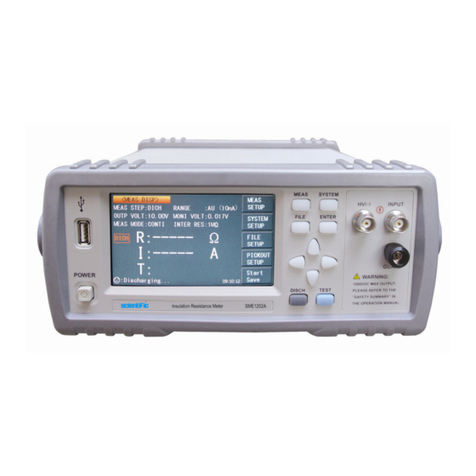
Scientific
SM6015A 3/44
Table of Contents
1. Introduction ...................................................................................................... 5
2. Technical Specifications ................................................................................. 6
3. Safety Instructions........................................................................................... 8
4. Front Panel Overview ..................................................................................... 9
4.1 Front Panel Display Descriptions.....................................................................9
4.2 Front Panel Buttons .......................................................................................10
4.3 Button Function Definition ...............................................................................10
4.4 LCD Display Overview ...................................................................................11
4.5 LCD Display Descriptions ...............................................................................11
4.6 Special Display Indicators ...............................................................................12
4.7 Test Port . .......................................................................................................13
5. Powering Instrument ...................................................................................... 14
5.1 Installing Battery .............................................................................................14
5.2 Connecting External Power Source.................................................................15
5.3 Low Battery Indication.....................................................................................16
5.4 Backlight Display.............................................................................................16
5.5 Charge Display ...............................................................................................16
6. Operation Instruction....................................................................................... 17
6.1 Data hold mode (HOLD) .................................................................................17
6.2 Data Record Mode (REC) ...............................................................................17
6.3 PRI Select Mode. ............................................................................................18
6.4 SEC Select Mode ...........................................................................................18
6.5 Test Frequency
(
FREQ
)
..............................................................................18
6.6 Test Electric Level ..........................................................................................19
6.7 Tolerance Mode (TOL)....................................................................................19
6.8 Auto LCR Mode...............................................................................................19
6.9 Measurement Rate (RATE).............................................................................20
6.10 Series/parallel Equivalent Mode .....................................................................20
6.11 Utility Menu (UTIL) ..........................................................................................21
6.12 Clear Functions (CLEAR)................................................................................25
6.13 Remote Control
(
RMT
)
................................................................................26
6.14 Fuse Detection ...............................................................................................26
7. Quick Start Guide............................................................................................. 28
7.1 CAUTION........................................................................................................28
7.2 Inductance Measurement................................................................................28





































